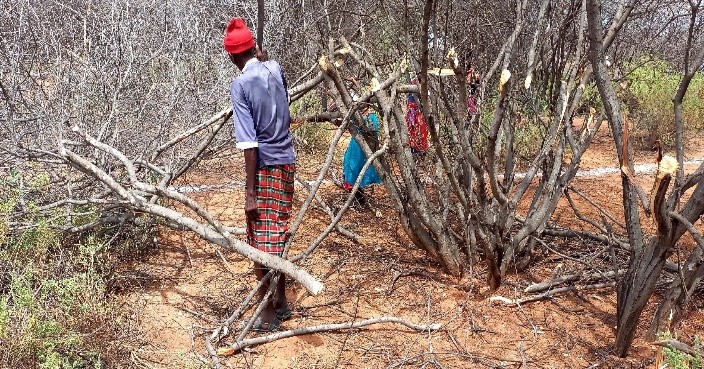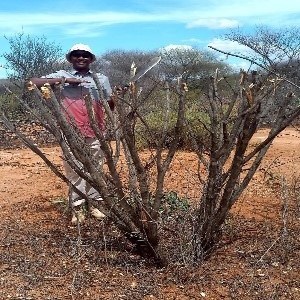The Vachellia reficiens is a native species in most part of Samburu East. The local community described V. reficiens as a ‘land grabber’ because where the species grow, there are no pastures for livestock and wildlife and creates soil surface crusting which exacerbates flooding, soil erosion and low herbaceous plant biodiversity.
The TRAMAP project within Challenge 2 in AgriFoSe2030 works with capacity building and Training of Trainers to support pastoralists and agro-pastoralists to increase agricultural productivity and enhanced landscape ecosystem functions through collective and gender observed adoption of sustainable rangeland management practices and networking. One of the main focuses is to reduce the spread of the species V. Reficiens to be able to increase biodiversity.
The reduced pastureland by V. reficiens aggravates pasture scarcity and conflicts among pastoralists. The Vachellia reficiens does spread seed dispersal through livestock and wildlife; humans; machinery; water (during floods); and whirl wind. The V. reficiens is prolific and successful in varied environments because; it can survive in different ecological systems; grow and mature fast; is prolific and produce many seeds per season; lack natural enemies in the new environment; ability to adapt to new environment fast.
 Caption: Community members participate in mechanical bush control. Photo by J. Mutune.
Caption: Community members participate in mechanical bush control. Photo by J. Mutune.
The control of this invader species is to reduce the density of the population. The TRAMAP team build capacity of the community and extension workers in Samburu East on mechanical control – when and at what height to cut, cutting the bush at breast - height, collecting during the onset of the dry season, and mechanically destroying the propagules (i.e. seeds). The cleared areas are then reseeded with rangeland grasses after installing rainwater harvesting structures to reclaim it from the invasive species. During a peer-to-peer network and exchange in Baringo, the Seiya CBO demonstrated to 14 trainers of trainers from Samburu East how to reseed not only for rangeland restoration but also for commercial fodder production.
 Caption: Vachellia reficiens thicket in Kalama Conservancy. Photo by S. Mureithi
Caption: Vachellia reficiens thicket in Kalama Conservancy. Photo by S. Mureithi
Read more about the TRAMAP project here

 Caption: Community members participate in mechanical bush control. Photo by J. Mutune.
Caption: Community members participate in mechanical bush control. Photo by J. Mutune.  Caption: Vachellia reficiens thicket in Kalama Conservancy. Photo by S. Mureithi
Caption: Vachellia reficiens thicket in Kalama Conservancy. Photo by S. Mureithi
 Veronica Brodén Gyberg, Dr
Veronica Brodén Gyberg, Dr